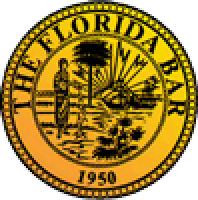- Call Today: (904) 438-8082 Tap Here to Call Us
Understanding Florida’s Attractive Nuisance Doctrine: When Property Owners Are Liable for Injuries to Children
Introduction
Children are naturally curious and may be drawn to objects or areas that pose hidden dangers. In Florida, property owners have a special duty to prevent harm to children who may enter their property due to hazardous conditions. The state’s attractive nuisance doctrine holds property owners responsible for injuries to children caused by dangerous conditions that are likely to attract them.
This guide explains how Florida’s attractive nuisance doctrine works, what types of hazards qualify, and what parents should do if their child is injured on someone else’s property.
What Is the Attractive Nuisance Doctrine?
The attractive nuisance doctrine is a legal rule that makes property owners liable when a child is injured by a hazardous condition on their property that is likely to attract children. Unlike regular premises liability laws, which often protect property owners from claims by trespassers, this doctrine recognizes that children may not fully understand the risks of entering dangerous areas.
Florida law requires property owners to take reasonable steps to secure or eliminate known dangers that could harm children, even if the child enters the property without permission.
Examples of Attractive Nuisances
Certain conditions or objects on a property may qualify as an attractive nuisance if they are likely to attract children and pose a significant risk of injury. Common examples include:
- Unfenced swimming pools or hot tubs
- Abandoned cars or appliances
- Construction sites with unsecured materials or equipment
- Trampolines or playground equipment in unsafe conditions
- Open wells or drainage ditches
- Unsecured machinery or tools
Property owners who fail to take reasonable precautions to prevent children from accessing these hazards may be held liable for injuries.
What Property Owners Must Do to Prevent Liability
To avoid liability under the attractive nuisance doctrine, property owners must take reasonable steps to prevent foreseeable harm. This may include:
- Installing fences or locked gates around swimming pools and construction sites
- Removing or securing dangerous equipment, such as lawnmowers and power tools
- Covering open wells and drainage areas
- Posting warning signs to discourage entry, though signs alone may not be enough to prevent liability
- Regularly inspecting the property for hazards and addressing them promptly
If a property owner fails to take these precautions and a child is injured, they may be held responsible for damages.
How to Prove Liability in an Attractive Nuisance Case
To hold a property owner liable for an injury under Florida’s attractive nuisance doctrine, the injured child’s family must prove:
- The property owner knew or should have known that a dangerous condition existed on their property.
- The condition was likely to attract children.
- The child did not understand the risk posed by the dangerous condition.
- The property owner failed to take reasonable steps to eliminate the danger or prevent access.
The burden of proof is on the victim’s family to show that the property owner acted negligently in failing to secure the hazardous area.
Defenses Property Owners May Use
Property owners facing an attractive nuisance claim may argue:
- The child was old enough to recognize the danger and avoid the hazard.
- The property was secured with adequate fencing, locks, or warnings.
- The child’s parents or guardians were negligent in supervising them.
- The hazardous condition did not exist long enough for the owner to have taken action.
An experienced personal injury attorney can help counter these defenses and build a strong case for compensation.
What Compensation Can Families Recover?
If a child is injured due to an attractive nuisance, their family may be entitled to compensation for:
- Medical expenses, including hospital stays, surgeries, and rehabilitation
- Pain and suffering for the child’s physical and emotional distress
- Future medical care for long-term injuries
- Loss of quality of life if the injury leads to permanent disability
The amount of compensation depends on the severity of the injury and the level of negligence involved.
What to Do If Your Child Is Injured on Someone Else’s Property
If your child is injured due to an attractive nuisance, taking the right steps can help protect your legal rights:
- Seek immediate medical attention to document injuries.
- Report the incident to the property owner or local authorities if necessary.
- Take photos of the dangerous condition and surrounding area.
- Obtain witness statements from neighbors or others who saw the accident.
- Consult a personal injury attorney to evaluate your legal options.
Filing a claim quickly is important because Florida law imposes deadlines for personal injury lawsuits.
How a Personal Injury Attorney Can Help
A personal injury attorney can assist families in attractive nuisance cases by:
- Investigating the accident and collecting evidence
- Proving that the property owner failed to take reasonable safety measures
- Negotiating with insurance companies to secure fair compensation
- Filing a lawsuit if necessary to hold the property owner accountable
At Bonderud Law, we have experience handling cases involving injuries to children and ensuring that negligent property owners are held responsible. If your child has been injured due to an unsafe condition on someone else’s property, contact us today for a free consultation.
Conclusion
Florida’s attractive nuisance doctrine is designed to protect children from hazardous conditions on private property. Property owners have a legal duty to secure dangerous areas that could attract young children, and failing to do so can result in liability if a child is injured.
If your child has been harmed due to an unsafe condition, seeking legal guidance can help you understand your rights and pursue compensation for medical expenses and other damages.











